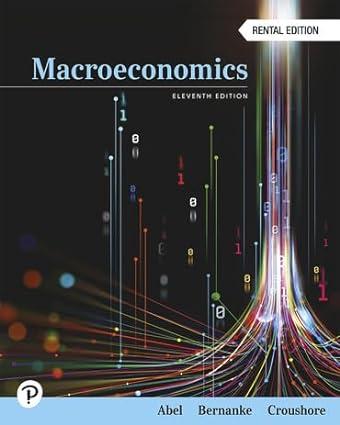Consider the following classical economy: [ begin{array}{ll} A D & Y=400+50 mathrm{M} / mathrm{P} A S
Question:
Consider the following classical economy:
\[
\begin{array}{ll}
A D & Y=400+50 \mathrm{M} / \mathrm{P} \\
A S & Y=\bar{Y}=1000 .
\end{array}
\]
This economy produces only wine, its output is measured in terms of wine, and its currency is francs. It trades with a country that produces only cheese, and the currency of that country is crowns. The real exchange rate, \(e\), equals 5 wedges of cheese per bottle of wine. The foreign price level is 20 crowns per wedge of cheese, and the domestic money supply is 48 francs.
a. What is the domestic price level? What is the fundamental value of the (nominal) exchange rate?
b. Suppose that the domestic country fixes its exchange rate at 50 crowns per franc. Is its currency overvalued, undervalued, or neither? What will happen to the domestic central bank's stock of official reserve assets if it maintains the exchange rate at 50 crowns per franc?
c. Suppose that the domestic country wants a money supply level that equalizes the fundamental value of the exchange rate and the fixed rate of 50 crowns per franc. What level of the domestic money supply achieves this goal? For the given real exchange rate and foreign price level, what domestic price level is consistent with the official rate? What domestic money supply level will yield this price level?
Step by Step Answer:






